My
List |
Addition Date
|
Target
|
Mission
|
Instrument
|
Size
|

|
2014-01-06 |
|
Spitzer Space Telescope
|
|
1041x585x3 |

|
-
PIA21475:
-
Brown Dwarf Weather (Artist's Concept)
Full Resolution:
TIFF
(1.615 MB)
JPEG
(52.96 kB)
|

|
2017-06-05 |
KELT-9b
|
|
|
5120x2880x3 |

|
-
PIA21472:
-
Hottest Hot Jupiter Animation (Artist's Concept)

Full Resolution:
TIFF
(23.38 MB)
JPEG
(527.1 kB)
|

|
2017-06-06 |
|
Galaxy Evolution Explorer (GALEX)
|
|
2200x1700x3 |

|
-
PIA21473:
-
Flaring Red Dwarf Star (Illustration)
Full Resolution:
TIFF
(4.931 MB)
JPEG
(202.8 kB)
|

|
2017-08-04 |
2014 MU69
|
New Horizons
|
|
2016x1628x3 |
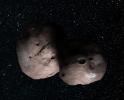
|
-
PIA21867:
-
A Kuiper Belt Pair? Artist's Concept of 2014 MU69 as a Binary Object
Full Resolution:
TIFF
(5.863 MB)
JPEG
(388.3 kB)
|

|
2017-08-04 |
2014 MU69
|
New Horizons
|
|
2016x1628x3 |

|
-
PIA21868:
-
Artist's Concept of 2014 MU69 as a Single Object
Full Resolution:
TIFF
(7.083 MB)
JPEG
(767.2 kB)
|

|
2017-08-17 |
|
Spitzer Space Telescope
|
|
4534x2550x3 |

|
-
PIA21752:
-
Brown Dwarf Weather (Artist's Concept)

Full Resolution:
TIFF
(7.027 MB)
JPEG
(397.9 kB)
|

|
2017-10-04 |
|
Spitzer Space Telescope
|
|
5120x2880x3 |
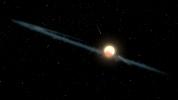
|
-
PIA22081:
-
Tabby's Star (Illustration)
Full Resolution:
TIFF
(5.938 MB)
JPEG
(382.4 kB)
|

|
2017-10-11 |
|
|
|
2048x1152x3 |

|
-
PIA22082:
-
Giant Exoplanet and Debris Disk (Artist's Concept)
Full Resolution:
TIFF
(3.949 MB)
JPEG
(77.56 kB)
|

|
2017-11-01 |
|
Spitzer Space Telescope
Wide-field Infrared Survey Explorer (WISE)
|
|
2048x1152x3 |

|
-
PIA22084:
-
Polluted White Dwarf (Artist's Concept)
Full Resolution:
TIFF
(3.508 MB)
JPEG
(78.36 kB)
|

|
2017-11-02 |
|
NuSTAR
|
|
5120x2880x3 |

|
-
PIA22085:
-
Black Hole With Jet (Artist's Concept)
Full Resolution:
TIFF
(34.34 MB)
JPEG
(1.257 MB)
|

|
2017-11-16 |
|
Spitzer Space Telescope
|
|
4800x2700x3 |

|
-
PIA22069:
-
55 Cancri e with Atmosphere (Artist's Concept)
Full Resolution:
TIFF
(22.07 MB)
JPEG
(374.4 kB)
|

|
2017-11-29 |
|
|
|
2700x2282x3 |

|
-
PIA22087:
-
WASP-18b (Artist's Concept)
Full Resolution:
TIFF
(14.95 MB)
JPEG
(515.9 kB)
|

|
2017-12-13 |
|
MAVEN
|
|
1920x1080x3 |
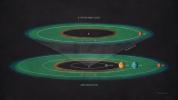
|
-
PIA22075:
-
How Habitable Might an Exo-Mars Be?
Full Resolution:
TIFF
(3.901 MB)
JPEG
(192.7 kB)
|

|
2017-12-14 |
|
Kepler
|
|
8700x2628x3 |

|
-
PIA22192:
-
Kepler-90 system (Artist's Concept)
Full Resolution:
TIFF
(10.73 MB)
JPEG
(573.3 kB)
|

|
2017-12-14 |
|
Kepler
|
|
1152x648x3 |

|
-
PIA22193:
-
Kepler-90 System Compared to Our Solar System (Artist's Concept)
Full Resolution:
TIFF
(645.6 kB)
JPEG
(50.32 kB)
|

|
2018-01-04 |
2014 MU69
|
New Horizons
|
|
2400x1200x3 |

|
-
PIA22190:
-
New Horizons Encountering 2014 MU69 (Artist's Impression)
Full Resolution:
TIFF
(4.627 MB)
JPEG
(248.2 kB)
|

|
2018-01-11 |
|
Kepler
|
|
5120x2880x3 |

|
-
PIA22088:
-
Kepler K2-138 System (Artist's Concept)
Full Resolution:
TIFF
(18.94 MB)
JPEG
(551.1 kB)
|

|
2018-01-11 |
|
Hubble Space Telescope
|
|
1000x750x3 |

|
-
PIA22079:
-
NASA's Hubble Spots Embryonic Galaxy SPT0615-JD
Full Resolution:
TIFF
(2.083 MB)
JPEG
(107.9 kB)
|

|
2018-01-11 |
|
Hubble Space Telescope
Spitzer Space Telescope
|
|
2000x1125x3 |
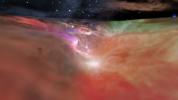
|
-
PIA22089:
-
Visible and Infrared Visualization of the Orion Nebula (Artist's Concept)
Full Resolution:
TIFF
(4.841 MB)
JPEG
(94.93 kB)
|

|
2018-01-31 |
|
Hubble Space Telescope
Spitzer Space Telescope
|
|
1608x2048x3 |

|
-
PIA22092:
-
Arp 142: The Penguin and the Egg
Full Resolution:
TIFF
(6.359 MB)
JPEG
(144.5 kB)
|

|
2018-03-26 |
|
Kepler
|
|
1337x706x3 |

|
-
PIA22350:
-
Kepler Beyond Planets: Finding Exploding Stars (Core Collapse Supernova)

Full Resolution:
TIFF
(586.8 kB)
JPEG
(82.38 kB)
|

|
2018-03-26 |
|
Kepler
|
|
1339x705x3 |

|
-
PIA22352:
-
Kepler Beyond Planets: Finding Exploding Stars (Type Ia Supernova from a White Dwarf Stealing Matter)

Full Resolution:
TIFF
(1.887 MB)
JPEG
(92.24 kB)
|

|
2018-03-26 |
|
Kepler
|
|
1334x701x3 |

|
-
PIA22353:
-
Kepler Beyond Planets: Finding Exploding Stars (Type Ia Supernova from a White Dwarf Merger)

Full Resolution:
TIFF
(994.5 kB)
JPEG
(59.68 kB)
|

|
2018-03-26 |
|
Kepler
|
|
1336x710x3 |
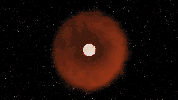
|
-
PIA22351:
-
Kepler Beyond Planets: Finding Exploding Stars (Type Felt Supernova)

Full Resolution:
TIFF
(585.8 kB)
JPEG
(79.56 kB)
|

|
2018-06-15 |
|
|
|
3816x2160x3 |

|
-
PIA22355:
-
Black Hole vs. Star: A Tidal Disruption Event (Artist's Concept)
Full Resolution:
TIFF
(15.61 MB)
JPEG
(451.1 kB)
|

|
2018-06-15 |
|
Hubble Space Telescope
|
|
4763x3126x3 |

|
-
PIA22356:
-
A Tidal Disruption Event in Arp299B
Full Resolution:
TIFF
(24.23 MB)
JPEG
(946.7 kB)
|

|
2018-06-28 |
|
|
|
3200x1800x3 |
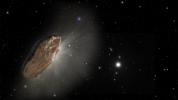
|
-
PIA22357:
-
'Oumuamua Races Toward Outskirts of Solar System (Artist's Concept)
Full Resolution:
TIFF
(5.281 MB)
JPEG
(296.7 kB)
|

|
2018-08-09 |
|
Hubble Space Telescope
Spitzer Space Telescope
|
|
15556x11667x3 |

|
-
PIA22565:
-
Ultrahot Jupiter WASP-121b
Full Resolution:
TIFF
(23.61 MB)
JPEG
(3.002 MB)
|

|
2018-11-16 |
|
Spitzer Space Telescope
|
|
2031x2032x3 |

|
-
PIA22569:
-
Supernova Remnant G54
Full Resolution:
TIFF
(6.313 MB)
JPEG
(101.5 kB)
|

|
2018-12-10 |
|
Hubble Space Telescope
|
|
1074x895x3 |

|
-
PIA22914:
-
Bow Shock Around Young Star
Full Resolution:
TIFF
(2.885 MB)
JPEG
(61.79 kB)
|

|
2018-12-18 |
|
|
|
4534x2550x3 |

|
-
PIA22917:
-
FU Orionis Disk Illustration
Full Resolution:
TIFF
(23.44 MB)
JPEG
(634.7 kB)
|

|
2018-12-18 |
|
Spitzer Space Telescope
|
|
1055x781x3 |

|
-
PIA22918:
-
Star Gaia 17pbi Seen by Spitzer
Full Resolution:
TIFF
(2.022 MB)
JPEG
(108.3 kB)
|

|
2019-01-07 |
|
Kepler
Spitzer Space Telescope
|
|
5120x2880x3 |

|
-
PIA23002:
-
K2-138 6 Planets Artwork (Artist's Illustration)
Full Resolution:
TIFF
(12.4 MB)
JPEG
(399.2 kB)
|

|
2019-01-07 |
|
Kepler
Spitzer Space Telescope
|
|
9019x5068x3 |

|
-
PIA23003:
-
K2-138 System Diagram
Full Resolution:
TIFF
(5.129 MB)
JPEG
(1.072 MB)
|

|
2019-01-07 |
|
Kepler
Spitzer Space Telescope
|
|
6000x3375x3 |

|
-
PIA23004:
-
K2-288Bb (Artist's Illustration)
Full Resolution:
TIFF
(33.47 MB)
JPEG
(1.192 MB)
|

|
2019-04-29 |
Asteroid
|
|
|
1220x700x3 |

|
-
PIA23195:
-
Asteroid Apophis
Full Resolution:
TIFF
(264.3 kB)
JPEG
(40.1 kB)
|

|
2019-08-19 |
|
Spitzer Space Telescope
|
|
3840x2160x3 |

|
-
PIA23130:
-
Rare Glimpse of the Surface of a Rocky World (Illustration)
Full Resolution:
TIFF
(13.84 MB)
JPEG
(473.9 kB)
|

|
2019-12-05 |
Asteroid
|
|
|
535x398x3 |

|
-
PIA23554:
-
Asteroid Bennu Particles
Full Resolution:
TIFF
(201.2 kB)
JPEG
(24.09 kB)
|

|
2019-12-05 |
Asteroid
|
|
|
2532x1417x3 |

|
-
PIA23555:
-
Bennu Particles (Animation)
Full Resolution:
TIFF
(1.12 MB)
JPEG
(116 kB)
|

|
2019-12-13 |
|
Wide-field Infrared Survey Explorer (WISE)
|
|
1622x1125x3 |

|
-
PIA23588:
-
Millions of Giant Black Holes
Full Resolution:
TIFF
(3.503 MB)
JPEG
(207.5 kB)
|

|
2020-01-07 |
|
SOFIA
|
|
2608x3022x3 |

|
-
PIA23409:
-
SOFIA Reveals How the Swan Nebula Hatched
Full Resolution:
TIFF
(15.44 MB)
JPEG
(401.7 kB)
|

|
2020-01-08 |
|
|
|
4096x2160x3 |

|
-
PIA23641:
-
Gravitational Lensing Graphic
Full Resolution:
TIFF
(13.46 MB)
JPEG
(750.8 kB)
|

|
2020-04-09 |
|
|
|
4800x2700x3 |

|
-
PIA23685:
-
What is a Brown Dwarf?
Full Resolution:
TIFF
(11.43 MB)
JPEG
(523.7 kB)
|

|
2020-04-15 |
|
Kepler
|
|
3840x2160x3 |

|
-
PIA23689:
-
Kepler Planet 1649c Artist's Illustration From Space
Full Resolution:
TIFF
(15.27 MB)
JPEG
(563.2 kB)
|

|
2020-04-15 |
|
Kepler
|
|
3840x2160x3 |

|
-
PIA23690:
-
Kepler Planet 1649c Surface View Artist's Concept
Full Resolution:
TIFF
(7.746 MB)
JPEG
(315.6 kB)
|

|
2020-04-15 |
|
Kepler
|
|
3741x2244x3 |

|
-
PIA23774:
-
Comparing the Size of Exoplanet Kepler-1649c and Earth (Illustration)
Full Resolution:
TIFF
(8.766 MB)
JPEG
(479.6 kB)
|

|
2020-06-24 |
|
NuSTAR
|
|
3334x1875x3 |
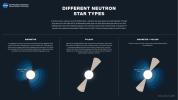
|
-
PIA23863:
-
Different Types of Neutron Stars (Illustration)
Full Resolution:
TIFF
(2.907 MB)
JPEG
(342.5 kB)
|

|
2020-07-07 |
Asteroid
|
Psyche
|
|
1600x900x3 |

|
-
PIA23876:
-
A Metal-Rich World (Artist's Concept)
Full Resolution:
TIFF
(2.866 MB)
JPEG
(239.1 kB)
|

|
2020-07-08 |
Comet
|
NEOWISE
|
|
860x651x3 |

|
-
PIA23792:
-
Comet NEOWISE Discovery Images
Full Resolution:
TIFF
(1.68 MB)
JPEG
(175.1 kB)
|

|
2020-07-16 |
|
NuSTAR
|
|
5740x3228x3 |

|
-
PIA23864:
-
Black Hole Corona's Disappearing Act (Illustration)
Full Resolution:
TIFF
(30.01 MB)
JPEG
(1.235 MB)
|

|
2020-08-18 |
Asteroid
|
|
|
1841x1033x3 |

|
-
PIA24037:
-
Asteroid 2020 QG Zips Around the Earth (Illustration)
Full Resolution:
TIFF
(518.8 kB)
JPEG
(64.57 kB)
|

|
2020-09-09 |
Asteroid
|
OSIRIS-REx
|
|
1280x720x3 |

|
-
PIA24101:
-
Asteroid Bennu's Particle Ejection Events (Animation)
Full Resolution:
TIFF
(558 kB)
JPEG
(35.64 kB)
|

|
2020-10-01 |
|
|
|
3840x2160x3 |

|
-
PIA23866:
-
Echo Mapping in a Black Hole Accretion Disk and Torus (Animation)
Full Resolution:
TIFF
(13.3 MB)
JPEG
(621.5 kB)
|

|
2020-11-18 |
|
Galaxy Evolution Explorer (GALEX)
|
|
4791x2695x3 |

|
-
PIA23867:
-
The Blue Ring Nebula
Full Resolution:
TIFF
(26.12 MB)
JPEG
(761.9 kB)
|

|
2020-11-18 |
|
Galaxy Evolution Explorer (GALEX)
|
|
1920x1080x3 |

|
-
PIA23868:
-
Geometry of the Blue Ring Nebula (Animation)
Full Resolution:
TIFF
(2.374 MB)
JPEG
(66.08 kB)
|

|
2021-01-22 |
|
|
|
3840x2160x3 |

|
-
PIA23870:
-
Measuring the Masses and Diameters of the TRAPPIST-1 Planets
Full Resolution:
TIFF
(9.793 MB)
JPEG
(417.9 kB)
|

|
2021-01-22 |
|
|
|
4800x2700x3 |

|
-
PIA24371:
-
Comparison of TRAPPIST-1 to the Solar System
Full Resolution:
TIFF
(6.209 MB)
JPEG
(634.2 kB)
|

|
2021-01-22 |
|
|
|
3840x2160x3 |

|
-
PIA24372:
-
Possible Interiors of the TRAPPIST-1 Exoplanets
Full Resolution:
TIFF
(8.19 MB)
JPEG
(589.7 kB)
|

|
2021-01-22 |
|
|
|
6000x3500x3 |

|
-
PIA24373:
-
TRAPPIST-1 and Solar System Planet Stats
Full Resolution:
TIFF
(11.5 MB)
JPEG
(1.115 MB)
|

|
2021-03-09 |
Sky
|
|
|
1200x1707x3 |

|
-
PIA24432:
-
Zodiacal Light
Full Resolution:
TIFF
(4.453 MB)
JPEG
(217 kB)
|

|
2021-03-29 |
Asteroid
|
Psyche
|
|
10800x10800x3 |

|
-
PIA24471:
-
Asteroid Psyche (Illustration)
Full Resolution:
TIFF
(133.9 MB)
JPEG
(8.736 MB)
|

|
2021-03-29 |
Asteroid
|
Psyche
|
|
10800x10800x3 |

|
-
PIA24472:
-
Asteroid Psyche (Illustration)
Full Resolution:
TIFF
(134.6 MB)
JPEG
(8.453 MB)
|

|
2021-04-07 |
|
|
|
5120x2880x3 |

|
-
PIA24380:
-
A Swiftly Rotating Brown Dwarf (Illustration)
Full Resolution:
TIFF
(22.98 MB)
JPEG
(659.5 kB)
|

|
2021-04-07 |
|
|
|
3814x1856x3 |
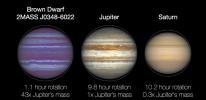
|
-
PIA24376:
-
Flattening of Brown Dwarf, Jupiter and Saturn (Illustration)
Full Resolution:
TIFF
(6.284 MB)
JPEG
(305.6 kB)
|

|
2021-04-21 |
Milky Way
|
|
|
3840x2160x3 |

|
-
PIA24571:
-
Star Map of the Milky Way's Outer Halo
Full Resolution:
TIFF
(16.93 MB)
JPEG
(1.124 MB)
|

|
2021-05-11 |
|
Voyager
|
|
1241x427x3 |

|
-
PIA24572:
-
Weak and Strong Plasma Oscillation Signals
Full Resolution:
TIFF
(960.8 kB)
JPEG
(80.75 kB)
|

|
2021-07-09 |
|
NuSTAR
|
|
4000x1459x3 |

|
-
PIA24574:
-
The Changing X-ray Brightness of SS 433 (Illustration)
Full Resolution:
TIFF
(2.821 MB)
JPEG
(198 kB)
|

|
2021-08-17 |
|
|
|
4800x2700x3 |

|
-
PIA24576:
-
A Break in the Milky Way's Sagittarius Arm
Full Resolution:
TIFF
(20.62 MB)
JPEG
(897.7 kB)
|

|
2021-08-31 |
|
NEOWISE
|
|
360x360x3 |

|
-
PIA24578:
-
An Accidental Discovery
Full Resolution:
TIFF
(256.6 kB)
JPEG
(15.79 kB)
|

|
2021-11-17 |
Asteroid
|
Double Asteroid Redirect Test (DART)
|
|
1300x856x3 |
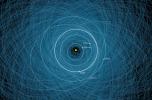
|
-
PIA24565:
-
The Orbit of Asteroid Didymos
Full Resolution:
TIFF
(3.34 MB)
JPEG
(328.4 kB)
|

|
2022-02-10 |
Jupiter
|
NuSTAR
|
|
3840x2160x3 |

|
-
PIA25131:
-
High-Energy X-rays Detected From Jupiter's Auroras
Full Resolution:
TIFF
(2.535 MB)
JPEG
(222.9 kB)
|

|
2022-03-15 |
Asteroid
|
|
|
1440x830x3 |

|
-
PIA24568:
-
Animation of Asteroid 2022 EB5's Orbit Before Hitting Earth's Atmosphere
Full Resolution:
TIFF
(248.9 kB)
JPEG
(41.43 kB)
|

|
2022-06-16 |
|
Herschel Space Observatory
|
|
13000x13000x3 |

|
-
PIA25162:
-
Large Magellanic Cloud Imaged by Herschel, Planck, IRAS, COBE
Full Resolution:
TIFF
(291.7 MB)
JPEG
(6.089 MB)
|

|
2022-06-16 |
|
Herschel Space Observatory
|
|
7400x4162x3 |

|
-
PIA25163:
-
Andromeda Galaxy Imaged by Herschel, Planck, IRAS, COBE
Full Resolution:
TIFF
(40.82 MB)
JPEG
(1.118 MB)
|

|
2022-06-16 |
|
Herschel Space Observatory
|
|
4950x4950x3 |

|
-
PIA25164:
-
Small Magellanic Cloud Imaged by Herschel, Planck, IRAS, COBE
Full Resolution:
TIFF
(54.26 MB)
JPEG
(1.546 MB)
|

|
2022-06-16 |
|
Herschel Space Observatory
|
|
2401x1350x3 |

|
-
PIA25165:
-
Triangulum Galaxy Imaged by Herschel, Planck, IRAS, COBE
Full Resolution:
TIFF
(3.554 MB)
JPEG
(124.8 kB)
|

|
2022-10-12 |
Star
|
|
|
3840x2160x3 |

|
-
PIA25431:
-
Comparing Sizes: the Sun and WR 140
Full Resolution:
TIFF
(14.52 MB)
JPEG
(254.8 kB)
|

|
2022-11-11 |
Eagle Nebula
|
Wide-field Infrared Survey Explorer (WISE)
|
|
3400x3400x3 |
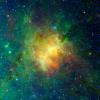
|
-
PIA25433:
-
The Eagle Nebula Observed by WISE
Full Resolution:
TIFF
(34.69 MB)
JPEG
(1.01 MB)
|

|
2022-12-20 |
|
NuSTAR
|
|
3840x2160x3 |

|
-
PIA25440:
-
A Black Hole Destroys a Star (Illustration)
Full Resolution:
TIFF
(13.8 MB)
JPEG
(505.4 kB)
|

|
2023-02-09 |
Sol (our sun)
|
NuSTAR
|
|
2000x2000x3 |

|
-
PIA25628:
-
Three-Telescope View of the Sun
Full Resolution:
TIFF
(8.903 MB)
JPEG
(217.5 kB)
|

|
2023-04-06 |
|
NuSTAR
|
|
3840x2160x3 |

|
-
PIA25781:
-
Magnetic Fields Around an Ultraluminous X-ray Source (Illustration)
Full Resolution:
TIFF
(21.83 MB)
JPEG
(592.9 kB)
|

|
2023-12-05 |
Pan
|
Psyche
|
|
2967x1225x1 |

|
-
PIA25960:
-
First Images From NASA's Psyche
Full Resolution:
TIFF
(3.067 MB)
JPEG
(825.1 kB)
|

|
2024-02-14 |
|
NICER
NuSTAR
|
|
4800x2700x3 |

|
-
PIA26274:
-
A Magnetar Loses Mass (Artist's Concept)
Full Resolution:
TIFF
(31.16 MB)
JPEG
(1.022 MB)
|

|
2024-08-08 |
|
NEOWISE
|
|
2784x2784x3 |
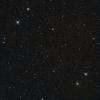
|
-
PIA26385:
-
NASA's NEOWISE Captures Final Image Moments Before End of Mission
Full Resolution:
TIFF
(17.92 MB)
JPEG
(782.4 kB)
|

|
2025-02-04 |
Sky
|
Europa Clipper
|
|
1043x1042x3 |

|
-
PIA26561:
-
First Images From NASA's Europa Clipper
Full Resolution:
TIFF
(653.1 kB)
JPEG
(34.31 kB)
|

|
2025-03-04 |
Star
|
Psyche
|
|
1608x1198x3 |

|
-
PIA26563:
-
NASA's Psyche Images Stars, Jovian System
Full Resolution:
TIFF
(745.5 kB)
JPEG
(56.08 kB)
|

|
2005-07-27 |
|
Spitzer Space Telescope
|
|
2526x1827x3 |

|
-
PIA03538:
-
Ingredients for Life (Artist's Concept)
Full Resolution:
TIFF
(13.86 MB)
JPEG
(575.9 kB)
|

|
2005-03-22 |
|
Spitzer Space Telescope
|
|
2783x1739x3 |

|
-
PIA07490:
-
Blinded by the Light (Artist Concept)
Full Resolution:
TIFF
(11.48 MB)
JPEG
(252.5 kB)
|

|
2012-07-09 |
|
|
Adaptive Optics System and Coronagraph
|
1123x563x3 |

|
-
PIA15807:
-
Using 'Dark Holes' to Spot Planets
Full Resolution:
TIFF
(1.898 MB)
JPEG
(105.7 kB)
|

|
2004-10-06 |
|
Hubble Space Telescope
|
Advanced Camera for Surveys
|
3622x3445x3 |

|
-
PIA06909:
-
Kepler's Supernova Remnant: A View from Hubble Space Telescope
Full Resolution:
TIFF
(30.15 MB)
JPEG
(2.364 MB)
|

|
2010-08-19 |
|
Hubble Space Telescope
|
Advanced Camera for Surveys
|
3853x3902x3 |

|
-
PIA13339:
-
Fun House Mirror in Space
Full Resolution:
TIFF
(45.1 MB)
JPEG
(1.367 MB)
|

|
2010-11-11 |
|
Hubble Space Telescope
|
Advanced Camera for Surveys
|
1249x1280x3 |

|
-
PIA13616:
-
Shedding 'Bent' Light on Dark Matter
Full Resolution:
TIFF
(4.802 MB)
JPEG
(132.9 kB)
|

|
2016-01-21 |
|
Hubble Space Telescope
|
Advanced Camera for Surveys
|
3906x3906x3 |
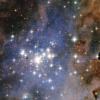
|
-
PIA20468:
-
Hubble Unveils a Tapestry of Dazzling Diamond-Like Stars
Full Resolution:
TIFF
(45.79 MB)
JPEG
(1.43 MB)
|

|
2004-09-09 |
|
Hubble Space Telescope
|
Advanced Camera for Surveys
|
1417x1417x3 |

|
-
PIA16009:
-
Dying Star Creates Fantasy-like Sculpture of Gas and Dust
Full Resolution:
TIFF
(5.322 MB)
JPEG
(132.9 kB)
|

|
2006-01-19 |
Helix Nebula
|
Hubble Space Telescope
Spitzer Space Telescope
|
Advanced Camera for Surveys
Infrared Array Camera (IRAC)
|
3125x3497x3 |

|
-
PIA03678:
-
The Mark of a Dying Star
Full Resolution:
TIFF
(32.78 MB)
JPEG
(1.165 MB)
|

|
2008-02-12 |
Abell 1689
|
Hubble Space Telescope
Spitzer Space Telescope
|
Advanced Camera for Surveys
Infrared Array Camera (IRAC)
NICMOS
|
3813x3367x3 |

|
-
PIA10237:
-
Astronomers Uncover One of the Youngest and Brightest Galaxies in the Early Universe
Full Resolution:
TIFF
(38.52 MB)
JPEG
(3.231 MB)
|

|
2012-06-26 |
|
Hubble Space Telescope
|
Advanced Camera for Surveys
WFC3
|
1485x1045x3 |

|
-
PIA15803:
-
Galaxy Cluster and Giant Arc
Full Resolution:
TIFF
(4.657 MB)
JPEG
(195.2 kB)
|

|
2012-11-15 |
|
Hubble Space Telescope
|
Advanced Camera for Surveys
WFC3
|
1578x1520x3 |

|
-
PIA16465:
-
Astronomers Spot Most Distant Known Galaxy
Full Resolution:
TIFF
(7.198 MB)
JPEG
(305.8 kB)
|

|
2008-07-01 |
|
Hubble Space Telescope
|
Advanced Camera for Surveys
WFPC2
|
1280x1188x3 |

|
-
PIA10926:
-
Hubble Sees Stars and a Stripe in Celestial Fireworks
Full Resolution:
TIFF
(4.567 MB)
JPEG
(158.8 kB)
|

|
2018-11-15 |
|
Wide-field Infrared Survey Explorer (WISE)
|
ALMA
|
11520x8640x3 |

|
-
PIA22358:
-
Most Luminous Galaxy is Eating Its Neighbors (Artist's Impression)
Full Resolution:
TIFF
(127.5 MB)
JPEG
(4.134 MB)
|

 Planetary Data System
Planetary Data System





















































































































